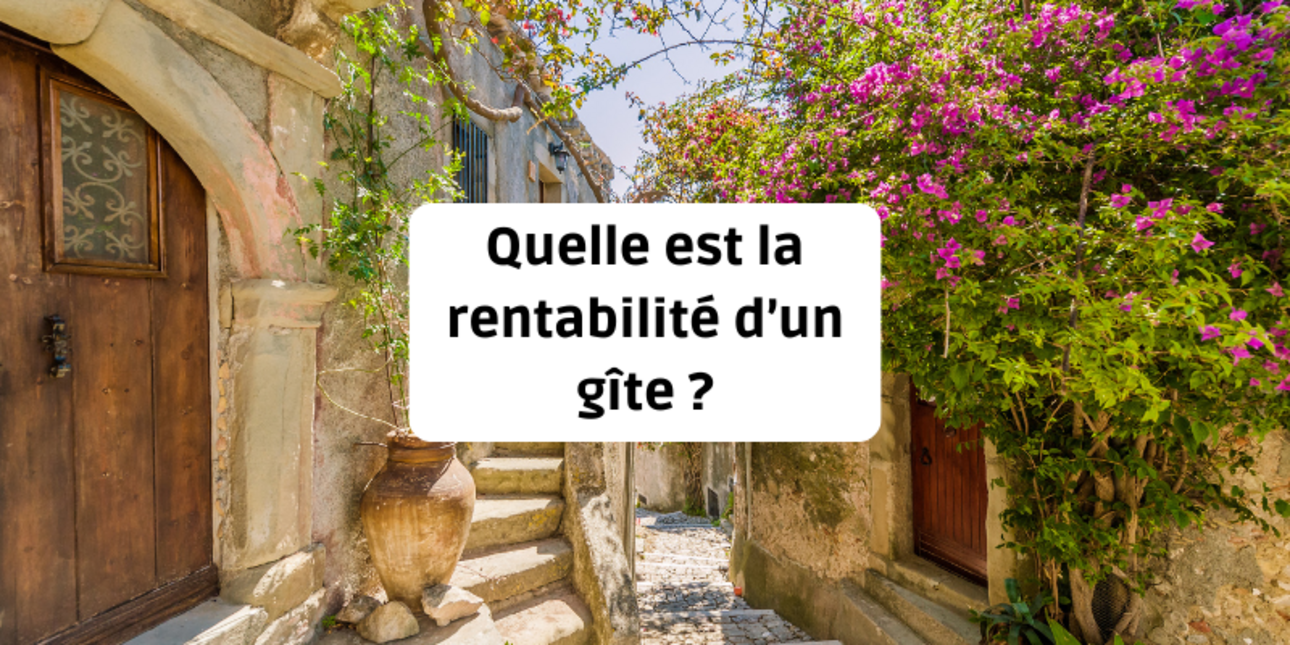
The profitability of a gîte is a crucial question for anyone thinking of embarking on this adventure. A gîte, by definition, is a self-contained, furnished tourist accommodation, often located in picturesque areas of France. But is it a profitable investment? This article explores the various financial and strategic aspects of maximising the profitability of your gîte, taking a number of factors into account.
Creating a gîte often starts with a substantial property investment. Whether you're starting from scratch or renovating an existing property, the costs can be high. Here are a few things to consider:
To support hosts, many départements offer specific grants to finance part of the work. These grants can cover between 20% and 30% of the cost of the work, with a ceiling often set at around 30,000 euros. For example, a gîte well located in a region tourist will be able to benefit from local grants to improve its infrastructure. It's important to take these possibilities into account when planning your projected business plan.
Recurring costs are another crucial aspect of profitability. They include :
A commission is often charged on every booking made via these platforms, and to be profitable, a B&B must generate revenue that exceeds these expenses. The key is to optimize costs while maintaining a high level of service. The concept of optimization involves rigorous management of resources and optimization of rental costs.
The choice of legal status is also decisive for profitability. Here are a few options:
Gîte sales depend mainly on occupancy rates and rental prices. To maximize your revenues, it's crucial to position your offer well in the market and manage bookings efficiently. Use management tools to optimize capacity and reduce off-peak periods. Sales are calculated by multiplying the number of overnight stays by the average price per night. This figure must be compared with total expenses to determine net profit.
To measure the success of your business, evaluate your operating margin and return on investment:
To assess the profitability of your B&B, keep an eye on these indicators:
Using channel managers to synchronize your bookings on different platforms (Airbnb, Booking, etc.) can help you maximize your occupancy rate. This reduces the risk of double bookings and optimizes the visibility of your offer. Modern management systems also make it easier to plan and organize your business.
Offering additional services such as local activities, meals (for example, a gourmet breakfast), or concierge services can increase your revenue. Guests appreciate services that enrich their stay and add value to the experience.
Investing in digital marketing, particularly via social networks and an attractive website, can attract more customers and improve your occupancy rate. Well-targeted advertising can reach a wide and varied customer base, strengthening your presence in the tourism market. Creating a strong brand image helps you stand out in a competitive sector. Using paid advertising and engaging content on social networks can help attract customers throughout the year.
The profitability of a gîte depends on many factors, from the initial investment to management and promotion strategies. By carefully planning each stage and monitoring key performance indicators, you can maximise your chances of success and make your gîte a profitable business. Opening a B&B can be a rewarding adventure, but it requires careful management and a thorough understanding of the market. With the right preparation, sound advice and effective management, your project can achieve its financial goals and provide an unforgettable experience for your customers.
1. How do I sell a gîte?
2. Where to buy a gîte
3. How much does a night in a gîte cost?
4. Buying a gîte or creating a gîte: which should you choose?
5. What are the formalities for opening a gîte?
6. The different types of gîtes
7. Taxation of gîtes
8. Gîte labels: a guarantee of quality for your rural accommodation
9. Gîte classification
10. Running a gîte as a business
11. How to communicate effectively for a gîte
12. How to choose the best platform for your gîte
13. What criteria should I take into account when buying a gîte?
14. Furnishing and decorating a gîte
15. What is the ideal number of bedrooms for a gîte?
16. The advantages of a large plot for your gîte
17. What are the essential features of a self-catering cottage?
18. Should a swimming pool be installed for a gîte?
19. What price should I pay for a gîte?